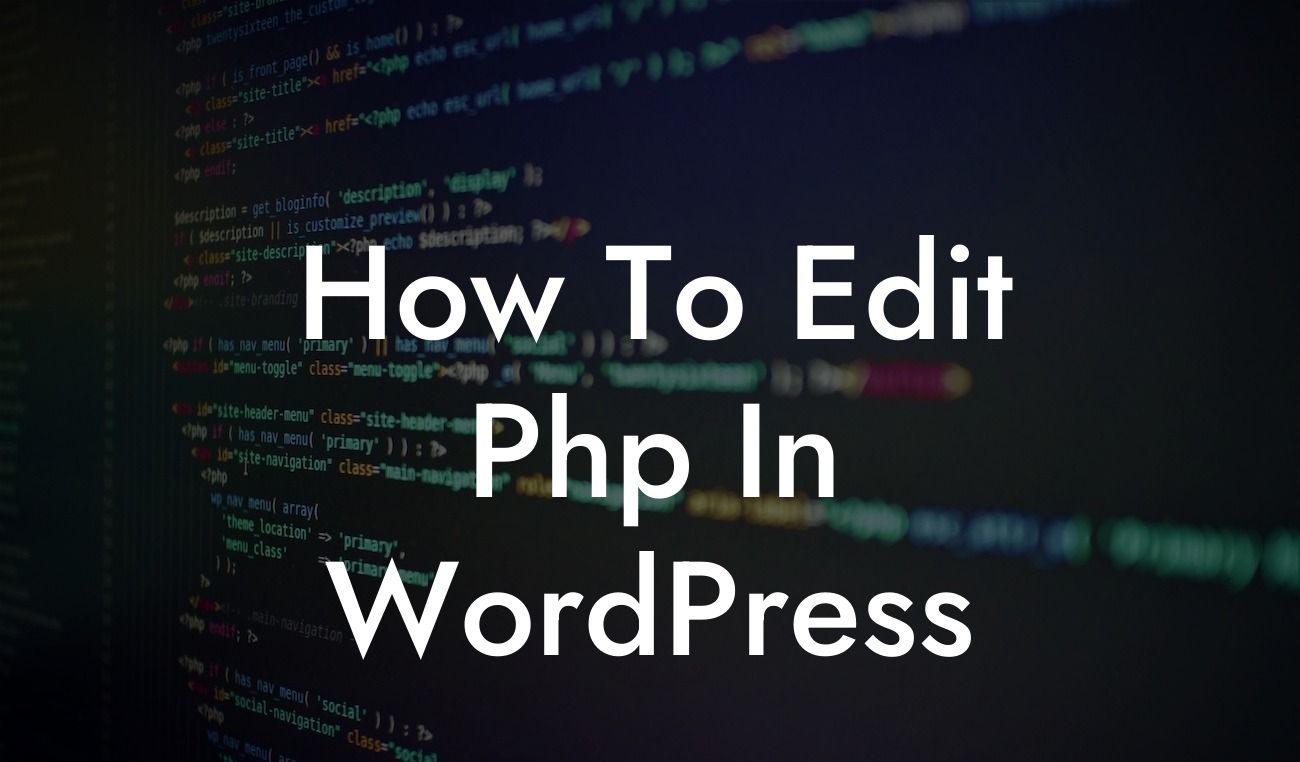---
Do you ever wish you had more control over your WordPress website's functionality? Are you looking to add custom features or make changes to your site? Well, you're in luck! In this guide, we'll show you how to edit PHP in WordPress, giving you the power to transform your website and make it truly your own. Whether you're a small business owner or an entrepreneur, mastering the art of PHP editing will open up a world of possibilities for your online presence. Get ready to level up your WordPress skills and dive into the exciting world of PHP customization!
Starting with the Basics:
Before we delve into the nitty-gritty of PHP editing, let's cover the basics. PHP, which stands for Hypertext Preprocessor, is a scripting language used in web development to add dynamic content to websites. It allows you to interact with databases, display different content based on user actions, and much more. In WordPress, PHP is the backbone that powers your website's functionality.
Understanding the WordPress File Structure:
Looking For a Custom QuickBook Integration?
To edit PHP in WordPress, it's important to familiarize yourself with the WordPress file structure. WordPress consists of various files and directories, each serving a specific purpose. The most important file for PHP customization is the functions.php file located within your theme's directory. This file acts as a gateway to modify how your theme functions. However, to prevent accidental errors, it's crucial to create a child theme and make all PHP edits within it.
Navigating the functions.php File:
Once you're comfortable with the WordPress file structure, it's time to dive into the functions.php file. This file holds an array of actions and filters that control how your theme works. By utilizing these actions and filters, you can make changes to your theme without modifying its core files. We'll guide you through some common PHP edits, such as adding custom functionality, modifying existing features, and removing unwanted elements.
Ensuring Best Practices:
As you venture into PHP editing, it's essential to adhere to best practices. Always make a backup of your website before making any changes to PHP files. This ensures that you can easily revert to a previous version if something goes wrong. Additionally, keep your code organized, comment your edits for future reference, and test your changes thoroughly to avoid any unexpected issues.
How To Edit Php In Wordpress Example:
Let's say you want to display a custom welcome message on your WordPress site. By editing the functions.php file, you can easily achieve this. Start by defining a new function that echoes your desired message and hook it to the appropriate action, such as 'wp_head'. Save the file, refresh your website, and voila! Your visitors will now be greeted with a personalized welcome message.
Congratulations! You've just scratched the surface of PHP editing in WordPress. By embracing PHP customization, you have the power to take your website from ordinary to extraordinary. Explore DamnWoo's collection of powerful WordPress plugins, designed exclusively for small businesses and entrepreneurs, to enhance your online presence even further. Don't forget to share this article with fellow WordPress enthusiasts, and stay tuned for more engaging guides. Happy customizing!













